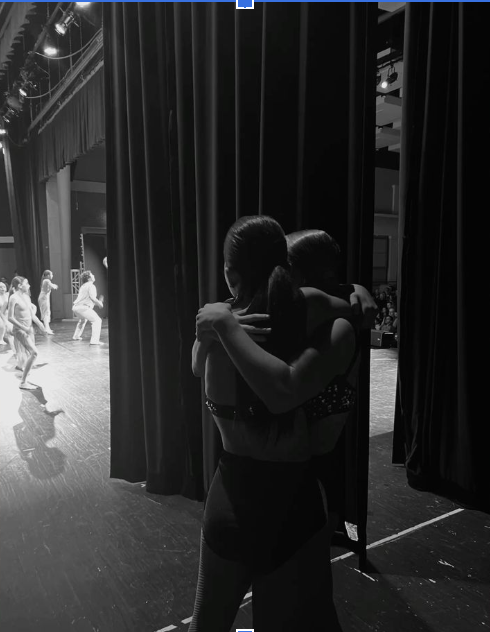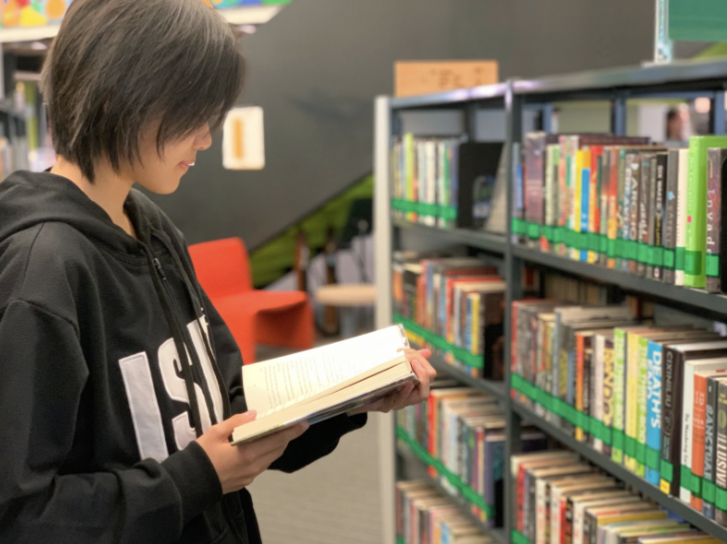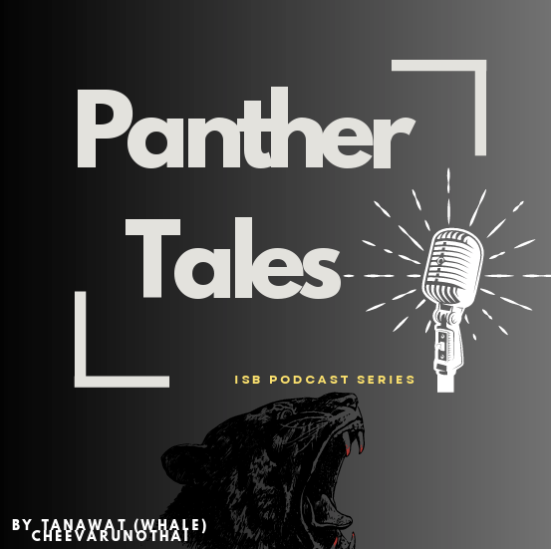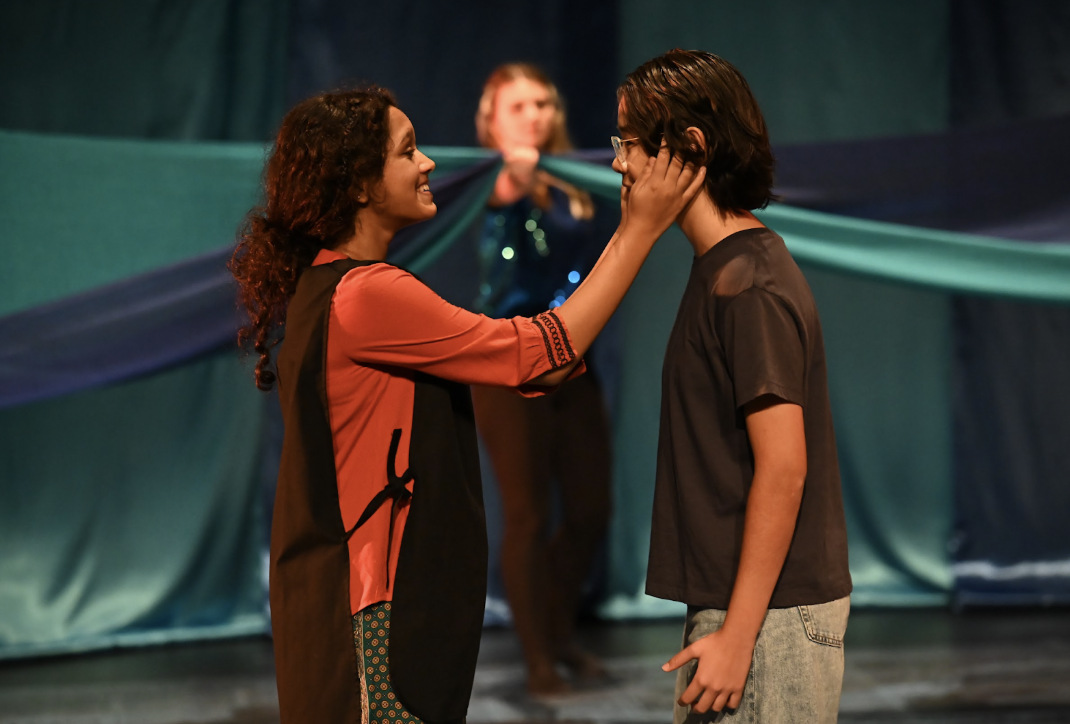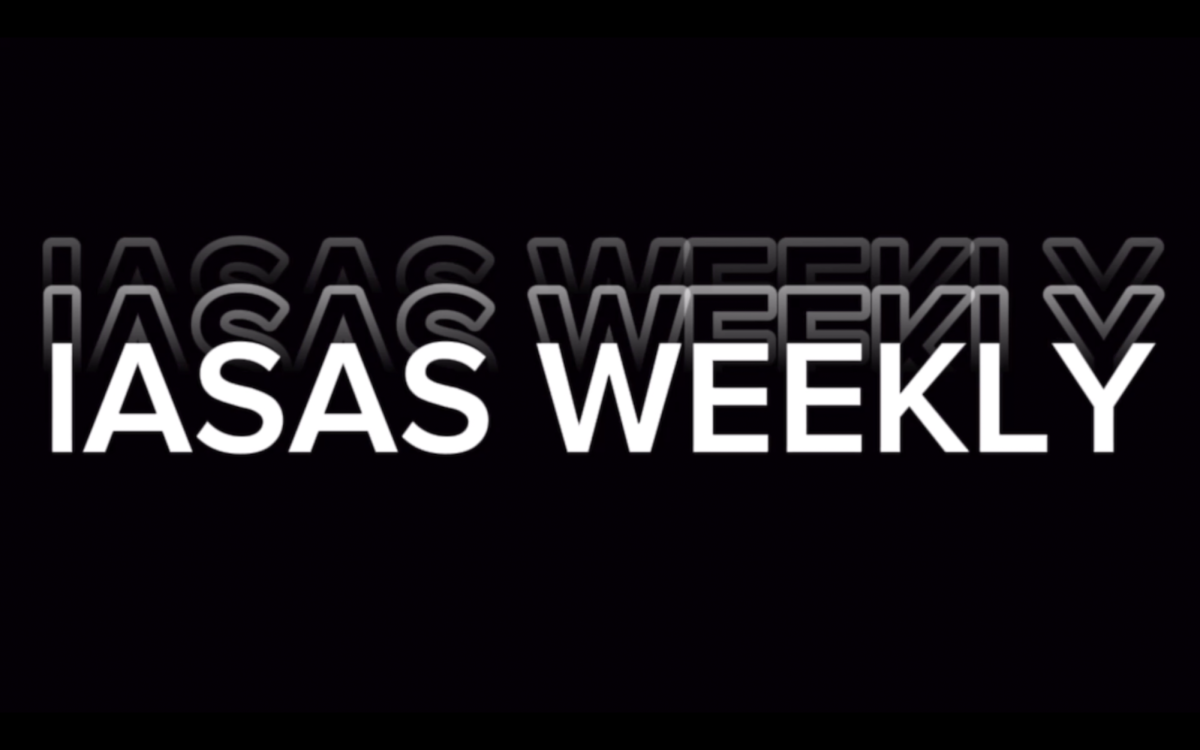Students Respond to the Hit Netflix Series “Adolescence”

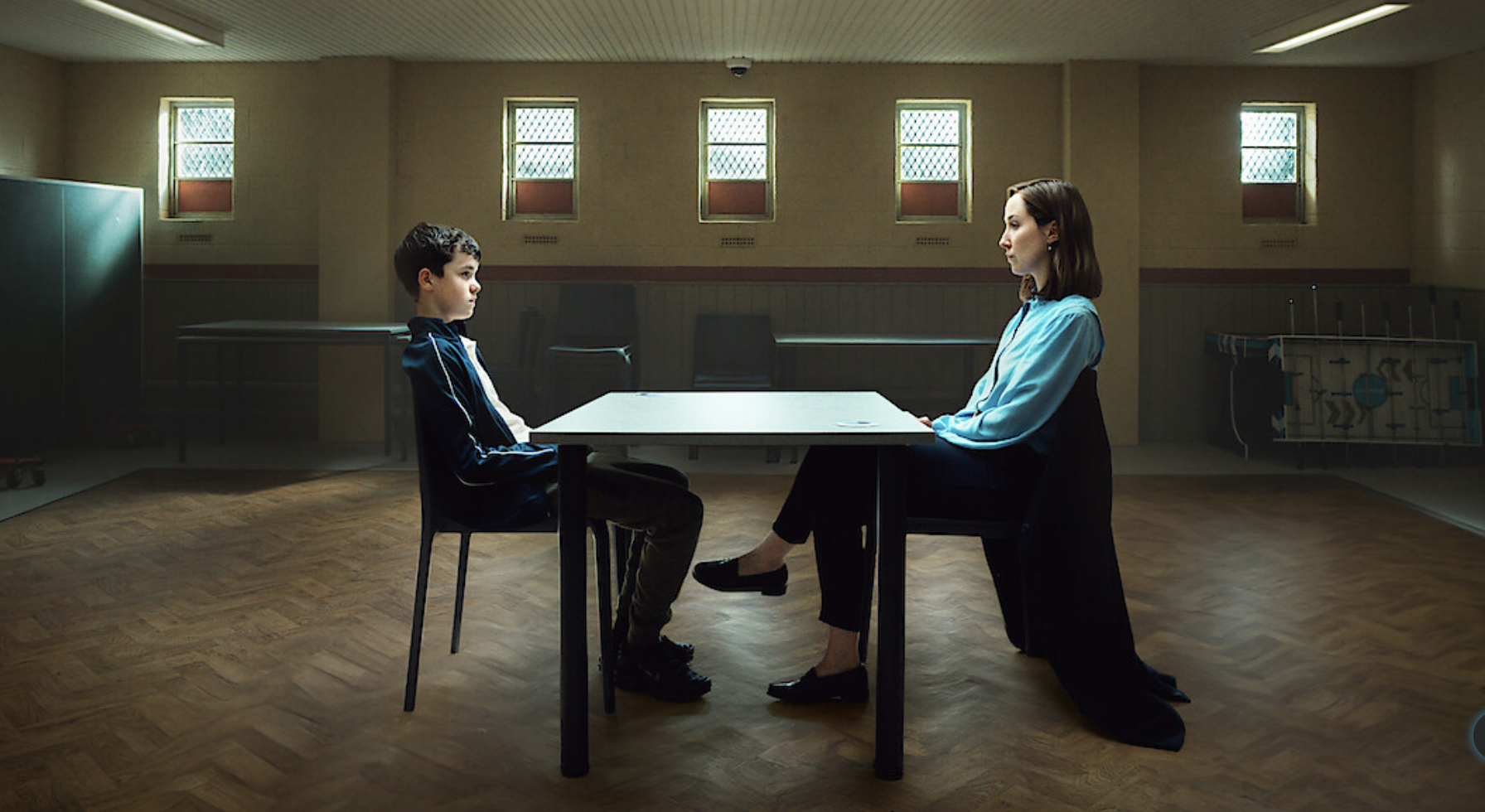
Sitting in a crowded auditorium, a speaker comes up on stage. They pause, bringing themselves towards the mic, and everyone stills as they open their mouth. Then they reveal their chosen topic. The Dangers of Social Media. You can probably guess the rest. The presentation goes over the addiction, the harm to self-esteem, the bullying — how social media is a demon, and we, the (dreaded) teenagers, are to blame for subjecting ourselves to something so utterly terrible.
If you’re like me, you’ve heard that spiel a hundred times over. Probably from every disgruntled adult since you were 12. For many of us, the phrase “social media is bad” and its many variations is a trigger to roll our eyes and groan. I can confidently say that I have done the same more than enough times. Not only does it come off as condescending, but it’s out of touch. Contrary to popular belief, many of us already know how damaging it is. We know it rots our brains. We know it damages our self-esteem. We know that the algorithm’s main job is to send dopamine to our brains. We know this and continue to use it because being a teenager, especially in the 21st century, means using social media.
That’s why, when I initially heard about what the hit Netflix TV show Adolescence was about, I felt critical to say the least. To me, it seemed to be another show created by middle-aged adults about the evils of the online landscape. I guess my main thought was really? Do we need another show that dissects the harm social media causes?
Then I was surprised. To say that Adolescence exceeded my expectations would be an understatement.
Over the course of a few lessons, the Media Studies class watched the limited Netflix show together. Not only was Adolescence engaging, it was fascinating in its commentary on both teen life and social media.
The show, which so clearly connects to current-day issues, is as chilling as it is tragic. It follows 13-year-old Jamie Miller and his family, who grapple with the aftermath of Jamie’s murder of his female schoolmate, Katie.
Throughout the four episodes, all shot through one take, viewers are taken on a journey through Jamie’s case. From the initial arrest in Episode One, the aftermath at his toxic school environment in Episode Two, the exploration of his mind in Episode Three, and how his family handles all of this in Episode Four. Audiences get a well-rounded and full understanding of the circumstances that led to Jamie’s murder of a girl.
What follows are our responses to the show, what we thought, and whether we think Adolescence is worth a watch.
From my perspective, I think the show does a great job of going through the nuance in Jamie’s case. Jamie is guilty, and there is no doubt about whether he murdered her. Despite this, the show emphasizes that, in a way, society has failed him. As we learn throughout the show, Jamie is a victim to social media — more specifically, incel culture. His views on women stem from the media he consumes online. It would have been easy for the show to boil down Jamie’s use of social media to “bad.” However, the show lends him some sympathy, letting the audience know that Jamie’s environment, such as his bullying at school and low self-esteem, are ultimately what leads to his isolation. This isolation makes him vulnerable, especially towards the more toxic parts of the internet, where misogynist beliefs about women spread like wildfire. With this in mind, it begins to make more sense why Jamie, a smart young boy with the rest of his life ahead of him, would commit such a heinous action.
The overflow of alpha male content from men like Andrew Tate and the effect incel culture has are so incredibly scary in today’s media environment. These creators compel men to abide by a toxic masculine mindset, one that points and blames women for their insecurities. As an older sister, I’ve seen those types of creators on my 14-year-old brother’s “for you” page. And mind you, my brother primarily watches Minecraft videos, yet those creators still appear. As a teenage girl, it terrifies me that even my little brother could become a victim of these beliefs. This type of content is spewed and fed to boys at a young age, normalizing it within our society and affecting the way women are treated as a result.
In the 2024 U.S. presidential election, it was reported that young men were the voters who pulled the vote in Trump’s favor, leading to his win. Many people agree that podcasts played a crucial role in this election cycle, instilling more conservative, misogynistic views onto voters.
In general, the show deals with this concept with care. It doesn’t primarily blame Jamie for his social media views, and it doesn’t try to talk down to the audience about how “evil” social media is. Instead, it shows the aftermath. How societal failures in defining masculinity can erupt into violence and the loss of a young girl’s life. And that’s why a show like this is so important. Adolescence doesn’t feel like a lecture; it feels like a warning. Teenage boys like Jamie can so easily be turned into monsters by media like this. As Jamie’s parents realize in Episode Four, there is no safety in keeping children in their rooms with their
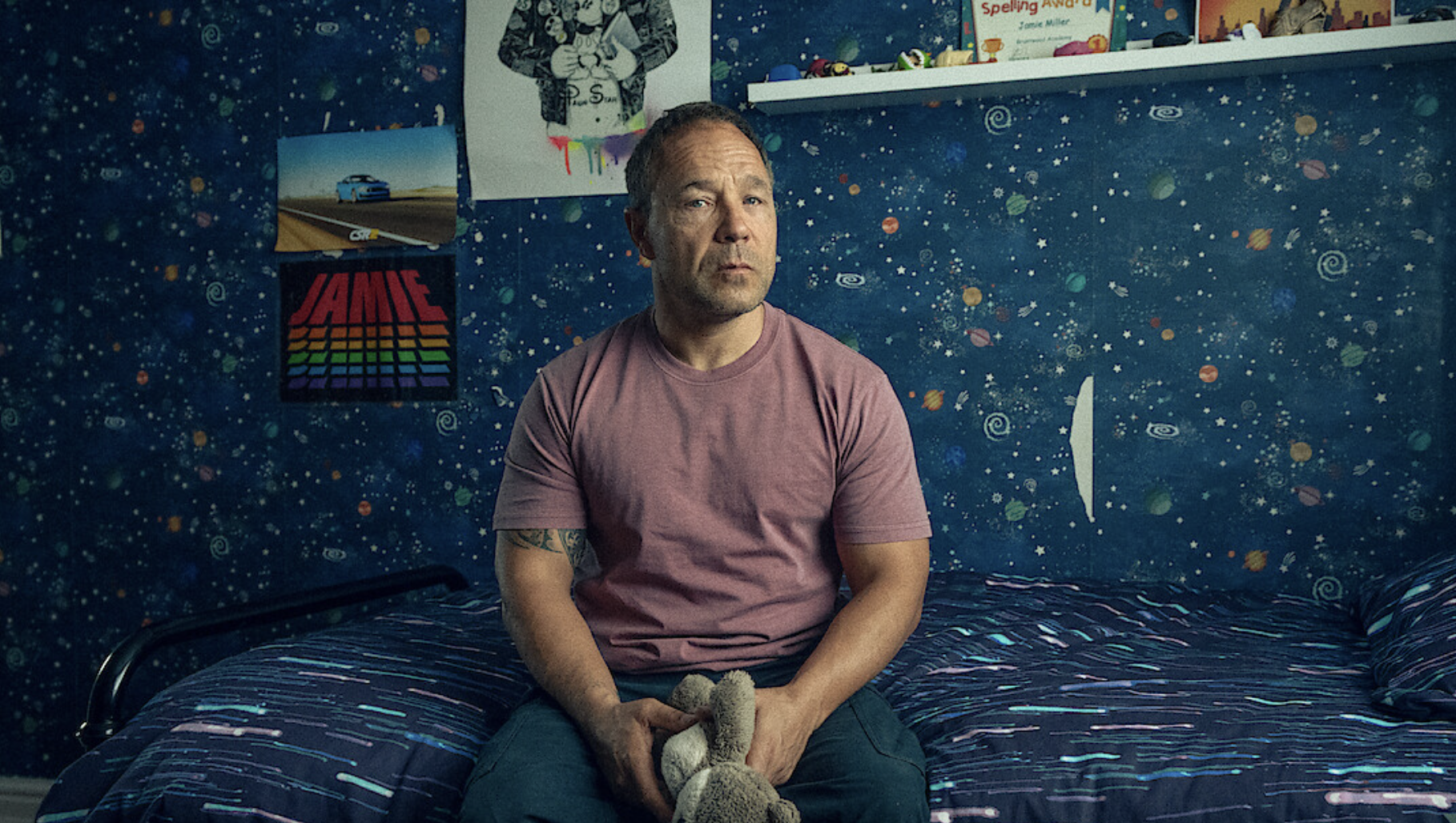
Though with fewer episodes than your average TV show, Adolescence stuck with me much longer than any other film or series I’ve seen before. Why? A combination of things: the incredible cinematography, the gut-wrenching performances, the deep characterization, and most importantly, the very raw, very true message that social media has a grip on our lives extending much farther than we’d like to admit.
The first episode of the show left me speechless. It was my first taste of the series, my first glimpse into who the characters are, and what they’ve been involved in. From the moment the Miller family’s front door was slammed open, to the second Jamie’s cell door closed, I was captivated, drawn in and held close to the action, left yearning to know more about the story.
The single-shot take brought me through the episode as if I was there too; I knew about as much as Jamie’s parents, I saw what they saw, experienced what they did, learned what they did. I think this technique is what captures audiences so effectively. When you start a story with the characters, and are forced to sit down and experience it in real time alongside them, you can’t help but develop a connection to them (despite them being fictional). Your journey and interpretation throughout the series is directly tied to theirs, and what you see and what you learn is controlled by how they see it. This single-shot take is what makes Adolescence feel so real; there are no breaks in the episode, something that closely mirrors real, everyday life. We cannot stop time at will and take a moment to breathe — applying this concept into the show gives it an element of reality that no sitcom or movie can. It demands audiences to pay attention and forces them to realize that if it can so closely resemble real life, then it’s probably happening in real life too. Calling attention to this drives readers to take a closer look at our society — it forces us to notice our flaws, and gets rid of the separating line we so often draw between fiction and reality.
Reality scares us. When our news and media is filled with all the big terrible things happening right now, it’s easy to become ignorant of our societal issues that stem from them. When we’re ignorant, and when we block out the news we don’t want to see or don’t want to believe, global issues ranging from war to misogyny become even more potent because they grow into new forms that we don’t recognize. When shows like Adolescence demand us to pay attention to our realities, they demand us to see the whole range of issues from big to small, because they force us to look up from our screens and say “wow — we need to change.”
Adolescence is more of a mirror than a window. It reflects back the deep issues that social media, ignorance, misogyny, and self-expectations can cause, rather than showing what they maybe might do some day. It grabs us by the shoulders and shouts, “this is happening, so get off your phone and pay attention!” The series shows us where our actions and choices as a society have landed us. It shows us what we’ve created for ourselves, and why it’s time to take responsibility and start talking about our issues in public rather than blaming something else and hurrying along with our day.
Someone (or multiple someones), somehow failed Jamie. That idea was clear from the start. It doesn’t necessarily matter who it was or if it were an individual person or a group of people. What matters is that a child was failed to the point where he killed another child.
Adolescence makes it clear that it happened because of a multitude of factors: the “manosphere”, bullying, anger, incel culture, fear, some twisted misogynistic idea. But what the show also makes clear is that Jamie fell down a rabbit hole that led him to believe his brutal murder of a girl wasn’t wrong (I can still hear him saying “I didn’t do anything wrong.”). And he did so because society allowed him to — indirectly or directly it doesn’t matter, our society’s belief system created a network of thinking and acting that allowed for Jamie to believe he was good.
The creators of Adolescence know this, and used the series to show us.
Yet what affects me even further about Adolescence is the fact that at some point while watching the show, I felt empathy for Jamie — a boy who murdered a girl because he was offended that she thought he would be an incel for life. It’s the intricately deep way to which we are introduced and to which we meet the characters that I reason this. We meet Jamie in the first episode; he’s scared, crying, screaming out for his dad. He’s afraid of needles and eats cornflakes for breakfast; he mumbles and stares at the world with wide eyes. He’s young — in most situations it’s impossible not to feel empathetic for him. But the show progresses and we learn a little more about him, and then some more, and even more. The Jamie in the audience’s eyes is no longer sweet and scared, but horrifying and terrible — yet underneath all of the big terrible things, Adolescence somehow still makes its viewers develop empathy (whether it’s for him or for what could have happened, I’m not sure).
It’s this insistent empathy that grows for an all but convicted murderer that so dangerously mirrors society. While watching the show I realized that the reason the show manipulates you into pitying Jamie is so gut wrenching is because it happens all the time in real life. The glorified murderer is a classic trope in all forms of media, the masculine guy protecting his ego. Our society has developed in a way that allows for people to hear about very bad things and go “yeah but…[insert an excuse]”.
Adolescence saw this and Adolescence reflected this. The insistent defenses we see from social media of criminals and toxic masculinity (think “he did it for love” or “he’s got to protect his masculinity!”) bleed into our thought processes and teach us that it’s OK to feel bad for those who’ve done very wrong. I’m not saying that we have to be cold and heartless towards anyone who’s been caught stealing a pack of gum. We can pity Jamie when he’s crying out for his Dad or breaking down as the therapist announces it’s their final session — those are human moments where a child is exposed to basic feelings of fear and anguish. But when Jamie ends up in prison, do we feel bad for him then? Or do we pity the actions he took to get there? Adolescence begs these questions, demands us to wonder if our empathy is truly unconditional, or simply accepting of everything our society has brought us to believe is OK —even if it isn’t.
When I finished the last episode of Adolescence, I left the class with an empty, numb feeling. The last scene — a frame of Jamie’s Dad tucking Jamie’s old teddy bear into bed — was frozen in my mind, alongside the tone of Jamie’s voice telling his father he would plead guilty to the murder. The two scenes contrasted in my head. Here was a very raw, very deliberate portrayal of a child, a child loved by two parents, someone who slept with a teddy bear and was presumed innocent because he was a child. And here also was a decision that you really only ever think of adults making: pleading guilty — to a violent crime no less — something the world seems to reserve only for anyone over 18. The images sat in my head and stayed with me the rest of the day.
While Adolescence tackles many things (pressure, misogyny, anger, identity, family), it tied up everything with the very simple idea that here was a child turned into an adult before he had hit 18. Was it the social media and his early exposure to the world that did it? Perhaps. Was it the school yard he grew up in that told him he had to be a certain way? Maybe. Or was it the society he lived in, that made it acceptable for a 13-year-old to be torn from their teddy bear and thrust behind bars? Who knows.
Either way, Adolescence demands the answers to those questions, and its creators don’t expect you to look far for them, but instead to glance around yourself and look at the world, and see what it means. If Adolescence taught me anything, it’s that our reality is much scarier and darker than we’d like to admit.

Watching Adolescence felt like someone had finally put the chaos of being a teenager under a microscope and actually cared about what they saw. One of the things that hit me hardest was how the show tackled social pressure and mental health, not in a dramatic, over-the-top way, but in those quiet, everyday moments that most people miss. Like when a character scrolls through social media and you see that instant self-comparison spiral. That feels too real. It made me think about how much of our identity is shaped by what we think other people want from us.
What stood out is two things: one, the show doesn’t try to solve anything; it just shows us, honestly, what it’s like to try and figure yourself out in a world that constantly wants to define you. That’s what makes it resonate. It doesn’t pretend teenagers are just going through a phase. It sees them for who they are: complicated, bullied, smart, lost, unmotivated, scared, and trying.
The most chilling moment in the show is when 13-year-old Jamie Miller is arrested for the murder of his classmate, Katie. When it starts off feeling like a gritty teen drama, it suddenly spirals into something darker, emotional, and more disturbing. The scene where Jamie sits across from Detective Bascombe, quiet and still, as he’s shown the security footage, is almost unbearable to watch. Everyone was sleeping, including me, lulled by the effect of the dark environment at the beginning, until that unexpected scene. That scene woke up each one of us. Not because he’s violent at that moment, but because he isn’t. He looks like any other kid, even more innocent-looking than them. That’s what makes it so terrifying.
And it hits even harder when you realize: This is what we miss. Through Jamie’s sessions with a psychologist, we learn he’d been deeply immersed in toxic online communities that glorify violence and dehumanize girls, spaces that clearly influenced him but were invisible to the adults in his life. That’s the part that’s most unsettling: The danger wasn’t in the real world but what was happening behind a screen. Adults often underestimate the power of online influence because they can’t see it, and because it doesn’t look dangerous at first glance. But what happens online can shape how teens see themselves, others, and the world. Algorithms feed insecurities, amplify hate, and trap young people in echo chambers where harmful ideas seem normal. When adults dismiss screen time as “just being on the phone,” they miss what’s really going on — friendships forming around dangerous content, normalization of misogyny or violence, and the silent pull of communities that feel more accepting than reality. Ignorance isn’t just blindness. It becomes complicity when we don’t make the effort to understand what today’s digital world actually looks like for teens.
Adolescence isn’t just a story about crime. It’s a warning. A brutal, necessary reminder that silence, ignorance, and unchecked influence can destroy lives long before anyone sees it coming. It challenges us to rethink how society treats youth, especially young boys, and how quickly we excuse or overlook their behavior because they “seem like a good kid.” It exposes the cracks in how we address mental health, how little support is available, and how often victims and perpetrators are created by systems that fail to listen. This show doesn’t let us look away, and it shouldn’t.
I highly encourage everyone in the ISB community to watch this unique series. It’s not just another Netflix drama. It’s a conversation starter, a wake-up call, and a must-watch. Add it to your list, not just for entertainment, but for awareness.
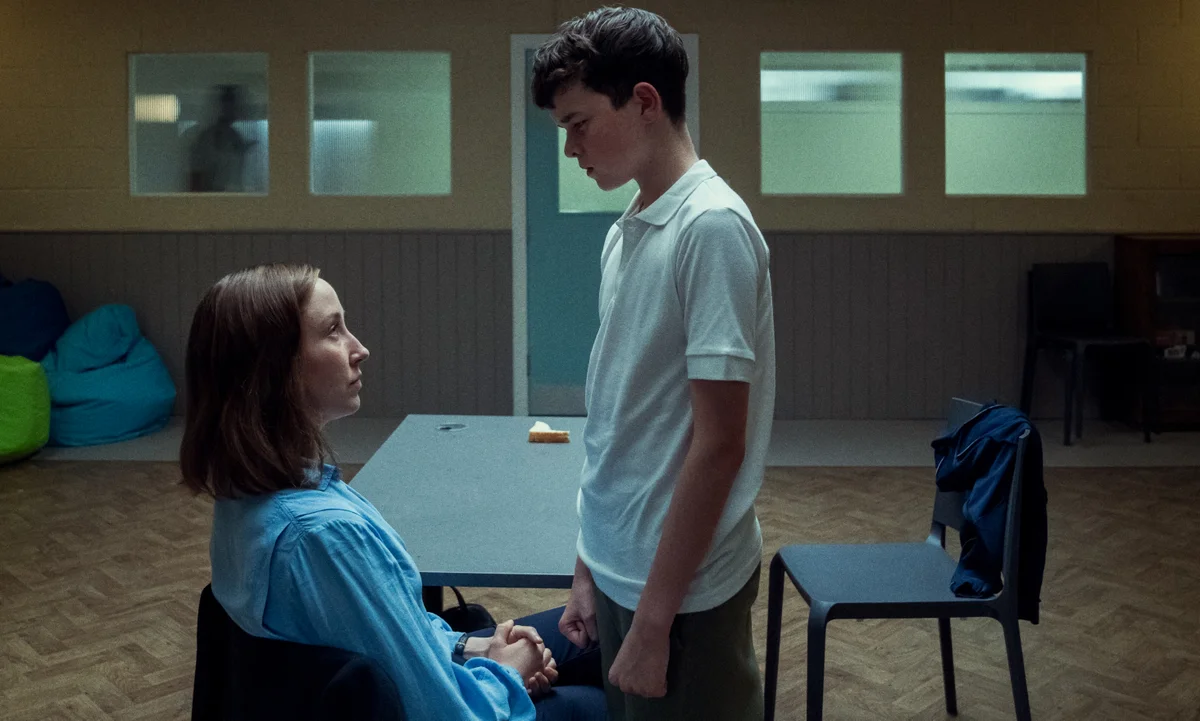
The Netflix series Adolescence reflects a simple crime drama, evolving into a mirror reflecting the toxic influence of social media on teens and the disconnection between generations. What’s next is the common spoken issues: addiction, cyberbullying, and other negatives. What initially appears as a straightforward case of a bullied 13-year-old murdering a classmate appears to expose deeper societal issues, revealing how digital lives and parental neglect can lead to tragedy.
In Adolescence, the police officers asked Jamie if he was friends with Katie, his classmate, based on the evidence that Katie had sent comments on his Instagram posts. That was when I realized how shallow the adults are in thinking about what a child could do. Even Jamie’s parents didn’t care what Jamie was doing in his bedroom with his computer every day. They didn’t even mind talking about school life with him every day. Continuing the show, the officer’s son, Adam, from a teen’s perspective, explained how different emojis meant the opposite of what they looked like. The “friendly” interactions immediately turned into infinite hate and bullying signals.
The word “incel,” although I have never heard of this word around our community, appears to be defined as an individual who is not being sexually appealing to others. People nowadays are putting too much pressure on sexuality and gender norms, where men and women should be attractive to be “popular,” being viewed as the most important feature as a teen. Throughout the scenes, Jamie’s school appears to have irresponsible teachers, bullies, and uncontrollable students using their phones during school time. The education given to the students by these teachers was insufficient for teenagers to consume. All of these values and character shown by Jamie’s school do not indicate that he has someone whom he can trust and rely on. Jamie’s friend, Ryan, chose to let Jamie borrow a knife to purposefully scare Katie instead of telling Jamie what was right to do. In this school environment, Jamie believes he was protecting his self-esteem from being called names and humiliated by other teens, which many teens worldwide may have experienced. When Jamie chose to murder Katie after her harsh rejection, he believed that he did nothing wrong but fight back for himself, but in the wrong way. His emotions decided for him before he could think. He defended himself by saying, “I didn’t do anything wrong” at the police station whenever an adult or officer talked to him.
“He’s just a child.” This sentence was being brought up multiple times by Jamie’s father when the officers were questioning Jamie if he had murdered Katie. It is ironic how overly protective Jamie’s parents are, reacting to his arrest, compared to the amount of care and support they gave to Jamie before he committed the crime. Jamie idolizes his father, so he tries to imitate his actions and language at home. As Jamie had uncovered the truth with the psychiatrist, he still remembered his father’s expressions, even a disappointed look at the football field could scar Jamie.
Both his father and mother significantly influenced Jamie. His mother, in particular, shaped his perceptions of women and his self-esteem by consistently deferring to her husband. This family dynamic shaped Jamie’s belief that women should be subservient to men and that men should be in control. This perspective led to his violent actions, including the one towards the psychiatrist, and ultimately influenced him to murder Katie. Jamie appears to believe that protecting his self-esteem involves showing his emotions forcefully.
So, on the other side of how his family actions influence Jamie’s, considering that his parents were never concerned about Jamie’s mental health since they never thought about “what a child could do with a computer alone in his room”. No one in the house has offered assistance or just talked to him about what is right to do to defend himself. The lack of caring may be responsible for Jamie’s crime since his family would influence his actions.
Adolescence powerfully summarizes how family dynamics, educational environments, and the toxic influence of social media can shape a teenager’s inner thoughts and feelings. The series calls for our generation to build more profound empathy and critical thinking, warning us to make decisions with careful consideration rather than momentary emotional unleashing.

I think Adolescence does such a great job of resonating so deeply with the audience because it explores a variety of struggles that many teenagers and people in general face today. Even though the show centers on Jamie Miller, a young boy attending a school very different from ISB, his experiences with family, identity, and social pressure are universal. The strength of the show lies in how it can take one person’s experience and personal situation and make it relatable to so many different viewers.
What stood out to me most was how small moments in Jamie’s life that may seem insignificant built up over time and led to an overwhelming sense of self-doubt and insecurity within him. One powerful example of this is the memory Jamie shares with his psychologist about playing soccer as a child. He recalls messing up and being laughed at by the other kids and dads while looking to his father for support, only to be ignored. This may seem like a small and insignificant moment on the surface, but Jamie struggled to even think about it in therapy. His silence says a lot. Later, in the final episode, his father tearfully recalls the same memory, realizing the role it played in the damage caused. This moment really struck me. It shows how something as simple as Jamie’s father looking away when Jamie needed his support could shape a person’s entire sense of self-worth. Neither of them ever talked about the memory directly, yet both carried it for so long, and this was really heartbreaking. This is an extreme example of how little decisions can strongly impact the trajectory of someone’s self-worth and insecurity, which is not only something many teenagers can relate to in terms of parental approval, but also people of all ages with any relationships in their lives.
Another moment that struck me was Jamie’s need for validation. In one therapy session, he lies about two girls liking him, clearly trying to seem more like a “normal” teenage boy in front of his psychologist. His final question of the session is, “Do you like me?” This is heartbreaking. It is not just about the psychologist, but about his desperate need to feel seen, enough, and accepted. This episode specifically pieces together a lot of the themes of his lack of self-worth seen throughout the first two episodes and brings light to the impact of them as well. This moment captures how deeply insecurity can affect teenagers, especially in a world full of comparison and social expectations online and in reality.
I think that it is human nature to compare ourselves to others, but it can make people feel like they are falling behind and not good enough. Later in the episode, Jamie is asked about the behaviors he felt were acceptable for boys and girls to act upon at his age, and his psychologist seems surprised to hear about the extent to which he is explaining these relationships. Maybe to her it seems extreme, yet it seems regular to Jamie. I think it’s realistic that a lot of adults nowadays aren’t aware of the expectations of those around us and how social media and cultural/social expectations are really making young people grow up a lot faster than they used to.
This is super scary yet real because this really showcases how parents, teachers, and peers truly never know what a person is going through. I love the perspectives the show gives us because it allows everyone watching to see at least some part of themselves reflected on screen, whether it through silence, anger, grief, or misunderstanding. The one-shot take makes everything feel more intimate and unfiltered, like we are right there with the characters. It doesn’t give the audience a break from the flood of emotions the series brings, urging more real and raw connections to the story. We aren’t just watching Jamie’s story, but we are experiencing it with him.
To sum up, I really liked the thinking the series encouraged as I was watching. There were so many little hints to broader issues throughout the series that foreshadowed maybe why or what drove Jamie to a point of committing a crime that nobody would have expected. Something I noticed that I actually found super interesting was the moment when Jamie shares his family dynamics, specifically his relationship with his father, to his psychologist. I think this is super relatable to a lot of the audience as a whole because sometimes we as humans don’t necessarily realize the impact the smallest of actions can have on those around us until it is too late. I think this really highlights that we need to understand the impact of our actions and think before we do something, before it is ultimately too late.
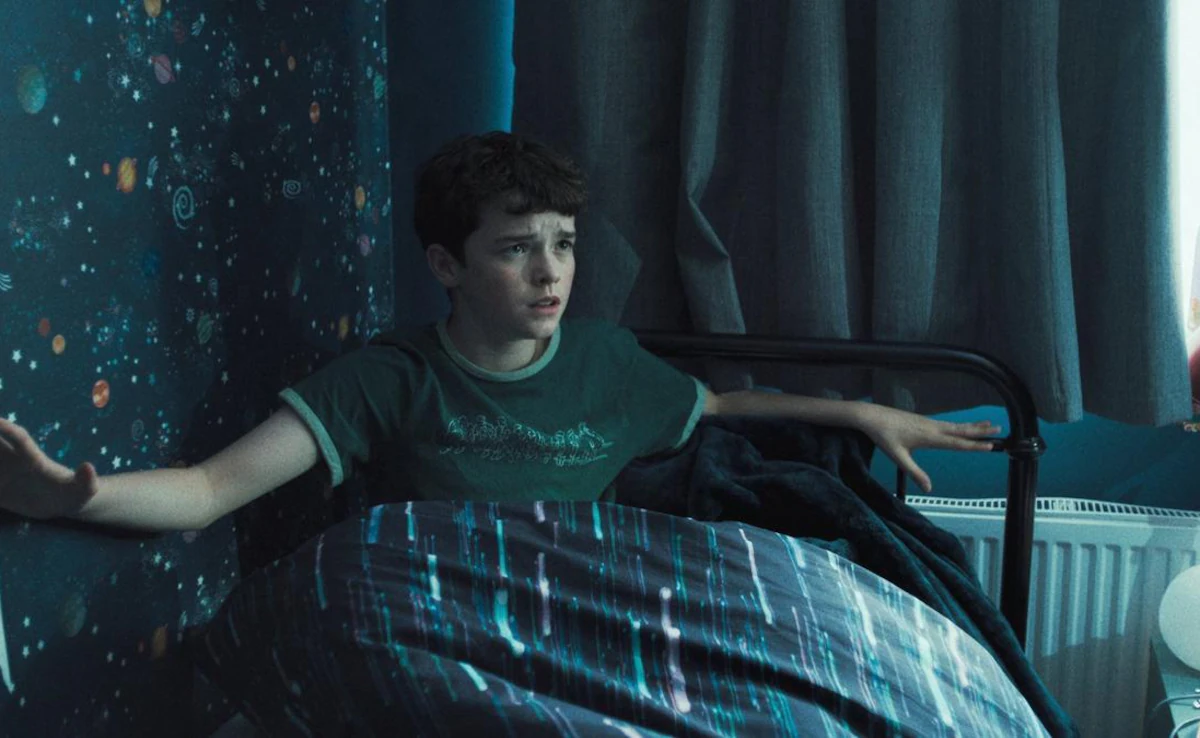
When I first heard that we would watch the show Adolescence, I wasn’t very intrigued because I don’t watch murder or horror films, but this one is different. While watching the first episode, I felt a rush of emotions — scared, sad, and even bored sometimes. In the first episode, this was where I learned the camera was not going to stop for a whole 40 minutes. This made me feel like I was a part of the show myself and was backstage following the actors as they went along. This made me feel more captivated by the show and made the reactions feel more real.
When the police go into Jamie’s house to find him, the actors expressed so well the shock of a 13-year-old being a murderer. There were some aspects I feel did not need to be shown — for example, when Jamie wets his pants or the sister collapses on the floor. I feel this scene could have been more rushed, mainly because it was so chaotic, and no one knows what’s happening. Also, in the next scene, we sit in a car for five minutes with the actor in silence, which got boring at points. The episodes over time got more interesting, as in the episode where Jamie talks to a therapist to see what’s going on and to have an evaluation. Throughout this scene, we see Jamie go through a mix of emotions, whether when they talk about his feelings towards girls or bring up his family members, Jamie tends to get angry and starts to panic. During this episode, my emotions were going all over the place as I was scared for the therapist. If Jamie had strong feelings toward a question, he would be defensive and not answer it. Leading to either a chair being thrown or shouting in her face.
Mostly, the questions were “how is your dad doing,” which would set him into a mad spiral. With his family dynamics, Jamie has heard and seen what his actions have caused to his family and feels a way now about answering anything that could harm them. His family dynamic with his dad was always different. In the show, they describe how, as a kid, Jamie’s dad would want to teach him sports or make him good at fighting, while Jamie was more of a quiet kid who played video games or drew pictures. Jamie was not seen as a masculine man and needed validation for it. He’s been locked up inside this training center for almost 10 months at this point, and needed validation that he was still a man and people did not hate him.
By the end of the third episode once the therapist tells Jamie this is their last session he views her as a friend and wants to spend more time with her. Due to his crippling fear of not being “liked” or not having “popularity,” he asks her the question “do you like me” this made me feel some kind of sympathy for Jamie, as he feels as if everyone in the world hates him now and doesn’t see him as a victim while the only reason he did it was because someone rejected him. I feel as if since Jamie has not had any physical contact with his friends or classmates he creates scenarios in his head that dictate weather he knows if someone likes him or not. So when he finally saw if someone liked him, he jumped at the opportunity, but never got a response. This made me understand what Jamie’s mind is thinking like now, and I got to see how his thoughts unravel.
Going back to his dad, I believe Jamie doesn’t want to harm his family anymore, so he would start to get argumentative and say he doesn’t want to answer those questions, and leave them out. This leads to the next episode, in which we follow the family and how their lives were affected by Jamie’s actions. The part that stuck with me was when Jamie’s dad went to his bedroom for the first time and got to see his everyday life. When he starts to cry on the bed and blame himself for raising his kid wrong I started to shed tears, The actor put so much emotion into the story he was trying to convey, which affected not just me but other people as well. He talks to the teddy bear as if it was Jamie apologizing for his mistakes even though he didn’t cause them. This scene pierced many viewers’ hearts and was a strong way to end this series.
Online Jamie was being called an “incel,” meaning someone who can’t get a girl. This made Jamie sensitive to the subject whenever the therapist would ask. Showing proof of all these comments of cyberbullying towards Jamie brought him back into a spiral, which led to a meltdown. Jamie is embarrassed by what people call him. In his mind it makes him less of a man.
I’ve seen many teens be affected by cyberbullying, but never to the extent where they murder someone. Rumors being spread about you can hurt and change your perspective on things. I have constantly gone through having to not believe rumors, even about myself. We all try our best not to let it get the best of us, but in Jamie’s case, not only was he humiliated after getting rejected, but the girl Katie decided to go to an extreme extent and bully him online for everyone to see. Jamie let it get to his head and had his intrusive thoughts get the best of him. Many teens go through this, especially in high school, and even though I’m only a freshman, drama starts quickly and spreads quickly; the next thing you know, everyone is talking about you, whether it’s true or not.
One thing I wish they could have added to this series to elevate the amount of emotion conveyed was to add the court scene where Jamie pleads guilty. I think this would have made a more impactful ending and given it more closure. After the show ended, I still had questions, especially about how the court would go. If we were to have had that scene, and that’s where the end, the judge says “Guilty” and they cut there. I believe that would have become a more impactful ending than having an emotional one. There were many reactions throughout the show, but the most impactful ones came from either being shocked or sad, which I feel a court scene could show both, making it a perfect way to end this show.
My overall thoughts on this show are mainly positive. I believe everyone should at least see this show once in their life, whether now or in their adult years, but this show proves the effect social media has had on teens and how our mental health can lead us to follow our intrusive thoughts. Jamie had societal pressure to be as masculine as he could be and to get as many girls as he could, which is still a reality for many teen boys. But we learn that we can trust our judgment and that sometimes we still may be wrong. This proves a point many teens should get.

Adolescence is a TV show on Netflix that has been climbing the charts and catching the attention of many viewers. People say it has connected profoundly with them for one of many reasons. My reaction watching this as a teenager in a complicated world is that I was shocked that this could happen so easily. If you think about it, people are murdered every day, and no one would care if you didn’t know them. For Jamie, if this story were real, people around the world would just see another murder added to the chart. It also sends a message to take action.
This TV show made me think about how social media can affect you. Jamie had the motive to murder Katie because Katie commented that Jamie would stay single forever and that no girl would ever want to be with him. Other people who went to the same school as Jamie and Katie supported Katie in her comments about Jamie by liking her comments on Instagram.
If a friend asked me to summarize this series, I would say it starts with Jamie’s home getting raided by the police with guns, making sure everyone is visible. They bust into Jamie’s room and D.I. Bascombe tells Jamie that he is under arrest for suspicion of murder. Then they bring Jamie to a van, and he says, “Dad, I didn’t do anything.” I feel he really cares about his dad, so he is ensuring he is okay. They arrive at the police station, and an officer signs him in. Then, he is asked if he has a lawyer or wants the station to provide him one. Jamie responds that he wants the station to offer him one. Afterward, he was interviewed by the station, his lawyer, and his dad. A short sentence summary for episode one could be: Jamie gets arrested on suspicion of murder.
In episode two, D.I Bascombe goes to the school and interviews different people — like for example Ryan (Jamie’s best friend), Jade (Katie’s best friend) and even entire classrooms asking if they have any information that could help them uncover the motive of why Jamie committed this crime. Eventually, Jade sees Ryan (who we later find out was involved with the crime) and beats him up in front of the whole school while saying You killed my best friend. The detective interviews Ryan but he doesn’t find anything of use until his son pulls him aside into an empty room and talks about incel. The son is saying that he is not understanding the emojis correctly and that they have a deeper meaning than just the emoji. The son explains what the emojis mean in Katie’s comments. The detective now understands and tries to interview Ryan again, but he jumps out the window of his classroom and runs away from the detective for a few minutes until he is at a dead end. The detective catches up to him and forces him to admit what he is hiding.
Eventually, Ryan admits that it was his knife, but he didn’t think Jamie was going to kill her with it. In episode 3, Jamie is visited by a therapist 8 months after his arrest, with whom he seems to have a bipolar relationship. We find out a lot about Jamie’s feelings and emotions in this episode, most would say it is by far the most engaging episode in the series. In episode 4, it’s Mr. Miller’s birthday, and 11 months after Jamie’s arrest, the family goes outside and sees the word “nonse” spray-painted on their van. This ruins their mood, so the family has to go to the hardware store and buy supplies to clean it up. Mr. Miller encounters someone who recognizes him as the dad of the son who murdered that girl. Mr. Miller doesn’t want to talk and wants to buy blue paint to cover up the graffiti on the van. Then he encounters the boy who he thinks wrote the word on the van and runs after him and goes insane, holding him tight and yelling at him, “You don’t know what I’ve been through”. Afterward, the family goes home and cancels their plan for the day. Mr miller goes into Jamie’s room for the first time in ages. He sees a teddy bear, holds it as if it were his son, and cries with it. This is the famous ending of the Adolescence series.
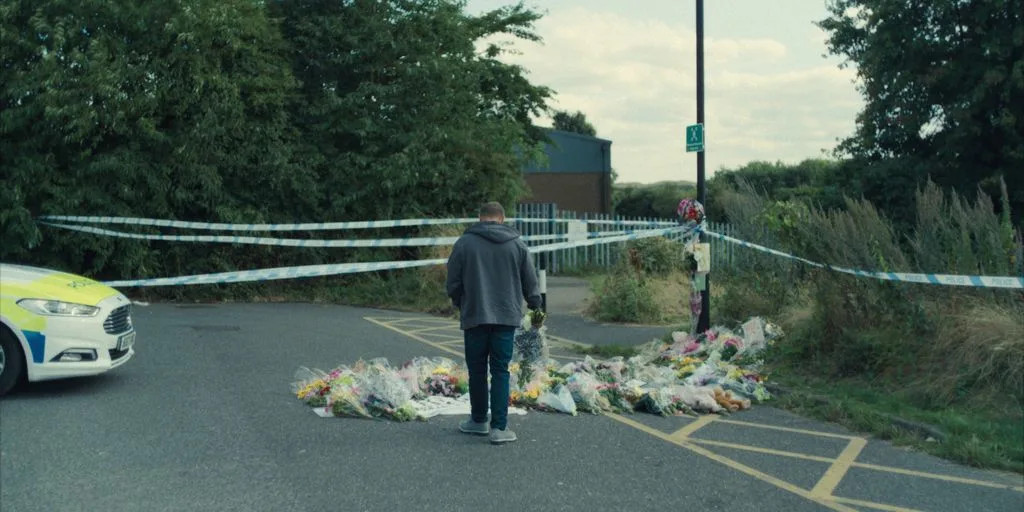
In Netflix’s Adolescence, the pressure to curate the perfect online image and the struggle with not only self-acceptance but acceptance in general is a main theme throughout the show. The show explores complex ideas of identity, behavior, lack of empathy, and the overuse of social media and technology, and how this affects young teenagers to young adults. This show can be interpreted as a message to its viewers as to what can happen if we don’t make a change in the crude online and offline behavior of teenagers and social media users across the world.
Identity is one of the main themes of Adolescence. This theme is presented in the show through the main character, Jamie. During the psychiatrist meeting scene with Jamie, we can see his struggles with his identity. He explains to his psychiatrist why he posts the images of girls on his social media accounts and how he felt threatened because of the rumors people have been spreading about him being celibate. Jamie tries to justify to his psychiatrist that what he did wasn’t so horrible by explaining that Katie (the girl he murdered) and her friends have been calling him unattractive in relatively insensitive ways and have been bullying him, both online and offline, due to his looks and his qualities, such as not being “sporty” or “masculine” enough. He says that this is the reason why he posts, in his opinion, attractive-looking girls to prove to everyone and his bullies that he isn’t celibate. Jamie also tearfully tells his psychiatrist of moments with his father, like when his father took him to football games and how his dad would look away when he couldn’t perform well. The viewers can empathise with Jamie when he tells his psychiatrist about this because it shows how even his father, the person he looks up to the most, also finds him not masculine or sporty enough, like his bullies and classmates do. The answer that avoided his question confirms to Jamie that the rumours about him are true.
As we keep watching Jamie’s journey through this murder case, we realize that the lack of empathy has a significant impact on why Jamie murdered Katie. In the show’s last episode, Jamie’s mum reveals that he spends a considerable amount of time in his room on the computer alone, and surprisingly, how his parents have never cared about what he does in his free time online. It is evident that Jamie’s dad doesn’t usually show empathy towards his son, as shown by his reaction during football matches, due to his past experiences. This proves the lack of empathy in Jamie’s life, as on social media he doesn’t get empathy and receives quite the opposite to his posts and his parents think that it is normal for every teenager to stay cooped up in their room and spend all their time online, therefore thinking it is perfectly fine for him to behave the way he does. His parents also haven’t lived in a world where technology and social media usage have risen so drastically, and therefore cannot understand their son or empathise with him.
As a teenager, the show has left me thinking about how bad situations are in parts of the world due to the use of social media. I don’t use too much social media myself. Therefore, I’m not entirely aware of what the online environment is like for our generation. But I have heard stories of my classmates and the people around me being catfished, cyber bullied, etc. I was shocked when I realized that Jamie had murdered Katie because of a comment she made under his post and the amount of likes it got. It made me think about how cyber bullying can affect people, because after all it was just a comment to an Instagram post, but listening to Jamie’s explanation on how it bothered him, how it wasn’t a one-time thing and how Katie has been bullying him way long before has made me think about the other possible dire consequences of social media such as self-harm, mental health issues or even suicide. Another thing that made me realize how the morals and expectations of people have changed is when Jamie tries to justify his murdering Katie by saying, “I didn’t do what the other boys did, so that makes me better… right?” It shows how horrifyingly normalized crimes such as murder and rape have become in today’s world.
Adolescence has resonated so profoundly with its viewers because it is the reality of today’s world. The show’s viewers know that the social media content presented in the show is remarkably similar to what’s happening on many social media platforms right now. This knowledge instills a fear in the audience because an actual murder has been committed. It will hopefully encourage them to change their social media and technology use. It will help them realize the consequences of their words, offline and online.
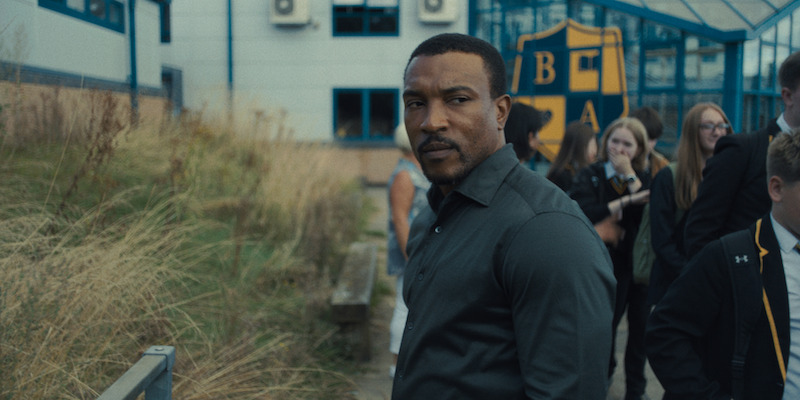
Unique, amazing, extraordinary. Watching Adolescence opened my eyes to a whole new perspective. Set in the United Kingdom, it explores the expectation of being a teenager in a rough school and how women can impact one’s mindset and decision-making. After watching the show, people have many perspectives, such as social pressure, mental health, identity, etc. But only one of them stands out to me: social pressure. After watching this show, I have a better understanding of how society shapes expectations.
Watching Adolescence left me in a confused state. After every episode, I doubted whether the situations were realistic. As a 13-year-old, you only think of video games and playing with friends. But when you meet Jamie, the 13-year-old kid in Adolescence, it will open your eyes to a whole new perspective on what the current generation of teenagers is exposed to daily, which, if you see, will affect a teenager’s mind, on top of keeping up with the social pressure. As a 15-year-old on Instagram daily, I can admit it can take a toll on your mental state, as in my opinion, social media shows everything you don’t have: relationships, friends, new products, someone being where you want to be, and much more.
Going back to Adolescence, my mind exploded as Jamie was arrested for murder. As I mentioned above, I denied this fact in the show, as I believed it was not Jamie; I firmly thought they had the wrong person. But I was wrong. Jamie committed the murder of a girl in his school. Later in the show, we find out that Jamie was bullied on social media, which I think triggered his anger, which led him to murder. This once again indicates how teenagers today are exposed to a lot of unfiltered content in the world and shows how vulnerable teenagers can be to it and how it can affect the mindset of a teenager and their decisions. Jamie was also under immense social pressure as he always wanted to fit in and be the popular kid in school but never was. Jamie wanted to be liked by women and as we find out in the show, the girl that Jamie murdered was bullying Jamie on social media, saying that he will always be a virgin. As Jamie was trying to fit in at school, getting bullied on social media by women, you can imagine his mental state. As I try to put myself in his shoes, I can only empathize with him. Still, at the same time, it does not cover up the fact that he murdered someone.
In the show, Jamie lived with his parents, and while his parents thought he was a typical, average teenager who was always in his room, they never knew what was happening inside his brain. Jamie was dealing with bullying and social pressure, which can take a significant toll.
The show Adolescence shines a light on what teenagers in today’s world go through and how exposed they are to unfiltered content. I highly recommend that parents watch this show. It opens your mind to many perspectives and can help your son or daughter, but overall, it is a fantastic show for everyone.
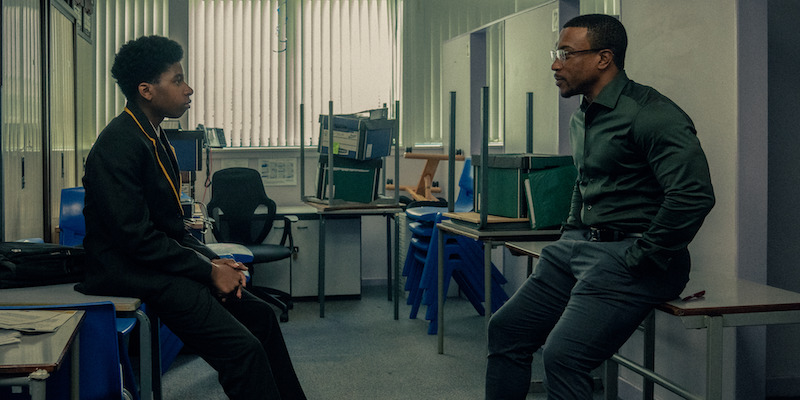
After watching the show Adolescence, I had a mixture of emotions — moments of shock, during the playing of the tape when Jamie was murdering the girl, and feelings of sorrow and empathy for the parents and sister. Nonetheless, children nowadays are being exposed to social pressures and mental health issues that are not safe for their future or the way they approach life.
The first conflict in the story was the fact that Jamie, who looked like an innocent kid at first, had murdered another girl after she cyberbullied him. In this scene, the show showcases the idea that uncontrolled exposure to social media at a young age can lead to a society where children are emotionally weak and tend to lose morality and a sense of right and wrong. This idea resonates deeply with the watchers because most kids in this generation also have technology addictions. Despite not all students being an extreme case such as Jamie’s, it is a warning to parents and students on the detrimental effects and potential consequences of using social media. One example of using social media is Jamie’s exposure to negative cultural beliefs on social media, such as expectations of masculinity that have caused him to develop an aggressive and harmful character. His aggression and dangerous actions are especially showcased in Episode 3 when a psychologist interviews Jamie. This scene was crucial because we can see Jamie’s biases and flawed beliefs through his answers to the psychologist.
The show attracts a broad range of audiences. For parents, it is beneficial because it raises parental awareness of their children’s exposure to media; it can allow parents to start to take action in controlling their children’s access to media. In the show, despite the parents not influencing Jamie’s beliefs and harmful actions, the parents are the people who brought Jamie the technology. Therefore, I believe that one way parents can control their children’s exposure is by not purchasing their children tech devices before they reach a certain age, or parents should either decide to teach their children to know what is right or wrong before allowing them to access various technologies.
Another idea that the show targets is how social media can be unfiltered. It strongly advocates regulating social media, protecting teenagers from exploring it without interrupting their freedom of thought, opinions, and development of beliefs and thoughts. Furthermore, children’s brains are not fully developed until they are around 20. This age of brain development further shows how sometimes we should not blame the “child” themselves, but instead blame the system, media, and exposure that has led to the child’s harmful character. This mainly applies to children, but can also be relevant to adults. Most people in today’s society cannot distinguish between fake and real content, and between good and bad content. Despite believing that it is natural for human beings to develop biases, this series warns us of the consequences where teenagers or even adults can create a pessimistic world view that will lead to harmful consequences, such as death, family conflict, and violence.
I believe this show reaches a broad audience and can be watched by parents and teenagers. I believe this series suits teenagers because it broadens their perspective and can warn teenagers of their actions, biases, and beliefs. One thing worth watching about this series is how it is recorded in one take and showcases the real-life component, because life has no “editing” or “cutting,” and in this series, all events occur one after another.
Similar to how the series was taken in one take, it also showcases how in life we cannot undo certain things, but decide to take action to control and learn from our mistakes. In the ending scenes of Adolescence, the parents could accept that their parenting was good, but they should have taken more action to teach Jamie. And we also saw that Jamie developed character as he learned to accept his actions and let go of his plea not to be guilty.











